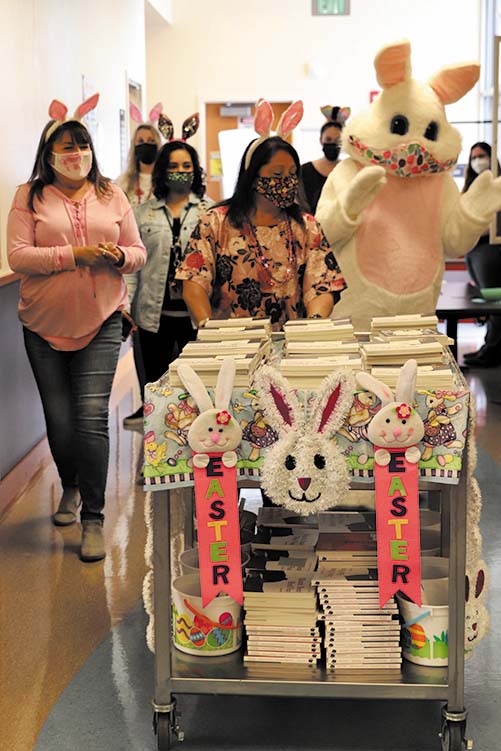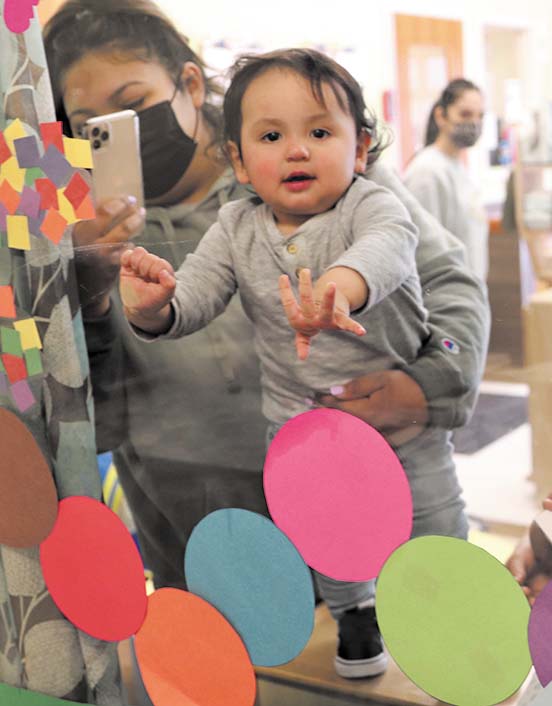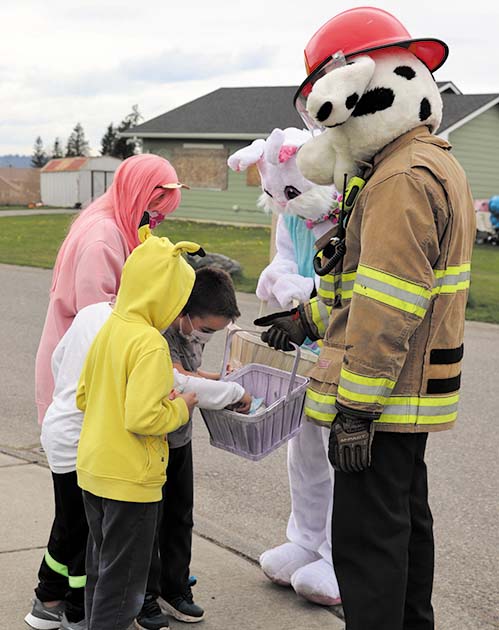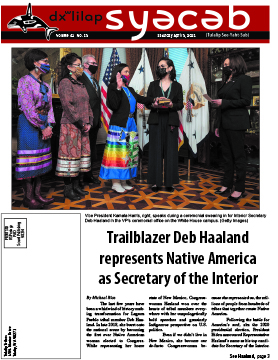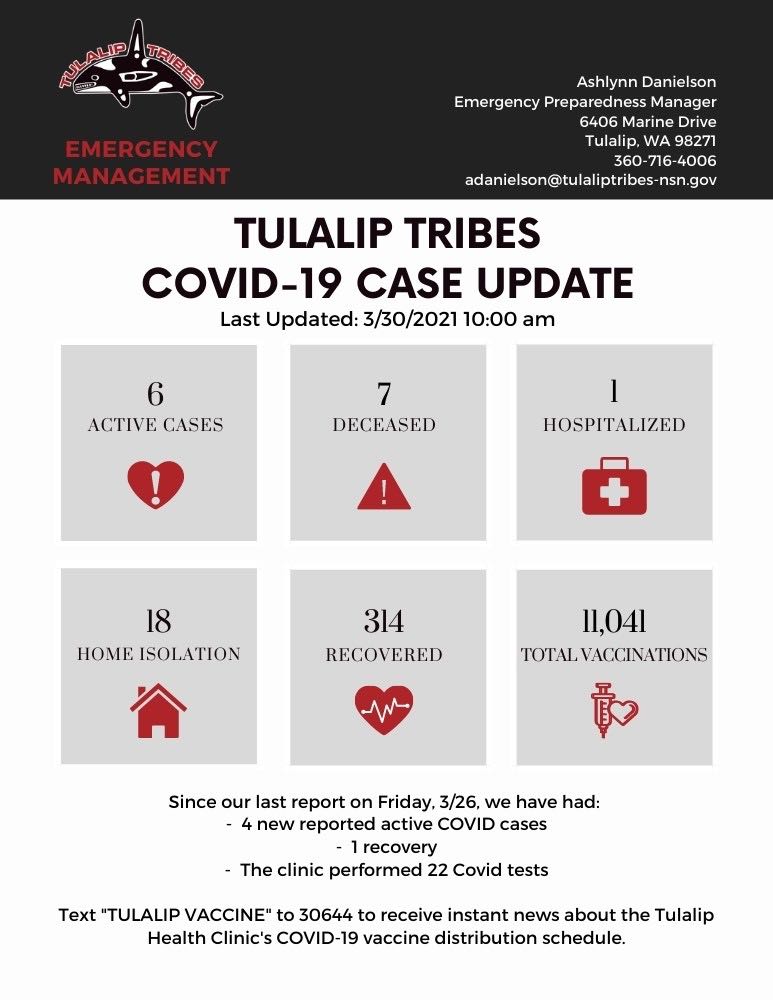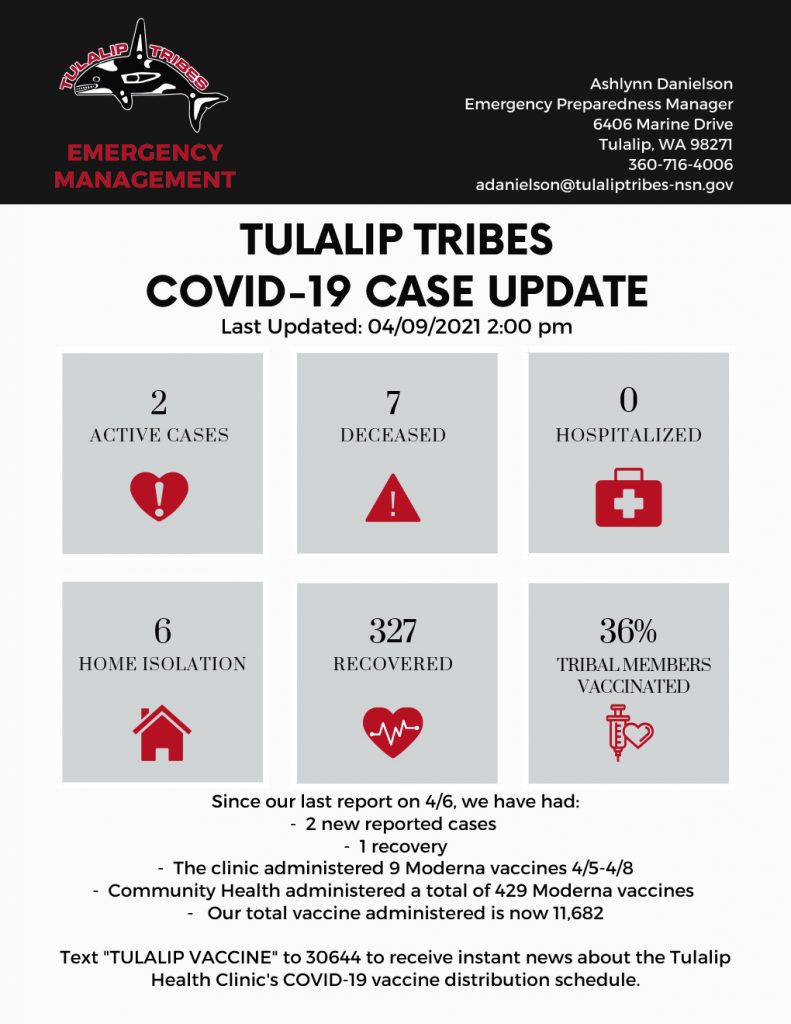
Category: Tulalip News
Hare-Delivery: TELA students receive books from Easter Bunny
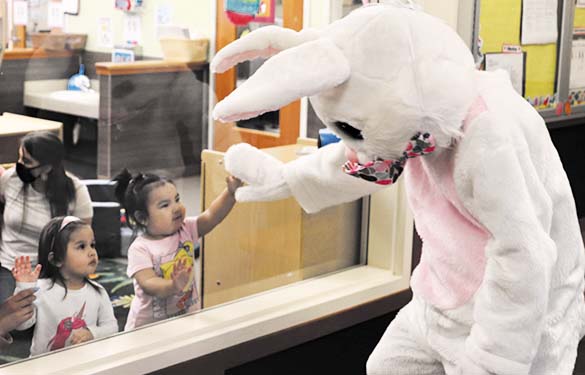
By Kalvin Valdillez, Tulalip News
The Betty J. Taylor Early Learning Academy (TELA) has a long-standing relationship with one Peter Cottontail, famously known as the Easter Bunny. For the past six years, the bunny has journeyed to the sduhubš territory to celebrate his favorite holiday with the Academy’s students. For a while, the bunny hosted the Easter Egg-travaganza which featured an egg-hunt and a photoshoot with the kiddos. Recently, beginning over the past couple years, the Easter Bunny and TELA began a new holiday tradition together by gifting the future generations of Tulalip a Native American-themed storybook they can enjoy with their families while learning the lifelong skill of reading.
“Literacy is important because we want our children to start reading,” said Katrina Lane, TELA Family and Community Engagement Coordinator. “They aren’t able to read on their own right now but if we read to them, they will learn to read even sooner. We also add-in the Native element, so they’re able to see a piece of our culture in reading.”
Talk about a fun way to get children between the ages of birth to five excited about reading! On the morning of April 1, the last school day before Easter weekend, the bunny began to make his rounds, hopping through the Academy’s hallways and visiting over twenty classrooms.
The kids could not contain their joy upon seeing the bunny, shouting, ‘Hi Easter Bunny!’ and the, ‘Easter Bunny is here!’ while jumping up and down and rushing to their classroom windows to interact with the famous holiday character. The bunny, who was masked-up, showcased the importance of social distancing by taking health and safety precautions to limit the spread of the coronavirus, which prevented his annual trip to Tulalip last year when the school and Tribal government temporarily shut-down operations.
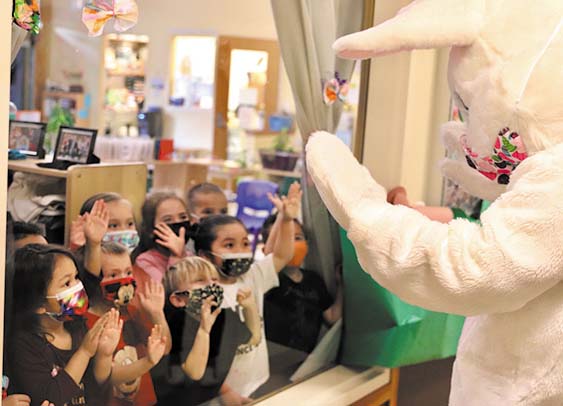
Moments prior to the book-delivery, Katrina shared, “Because of COVID we are masked-up and practicing social distancing and so is our bunny. This year he is able to bring them a book and remind them it’s important to wear a mask and to social distance during COVID.”
The children were delighted to receive their gift from the bunny. Some kids immediately began to flip through the pages and others held the book up-high over their heads, thanking the bunny for their new story, which is filled with fun traditional illustrations. This year, the kids took home Black Bear, Red Fox: Colours in Cree by Julie Flett (Cree- Métis) while the infants of the Academy received Black and White: Visual Stimulation Images for Babies by Morgan Asayuf (Tsimshian). TELA purchased the books at the Salal Marketplace giftshop at the Tulalip Resort Casino through a grant awarded to the Academy by the Tulalip Charitable Fund.
After another successful Easter-themed book-gifting event, TELA is excited to get the literary holiday tradition back on the bunny trail, promoting the magic of reading and hoping to engage their children in the activity both at home and in the classroom to set them up for a bright future.
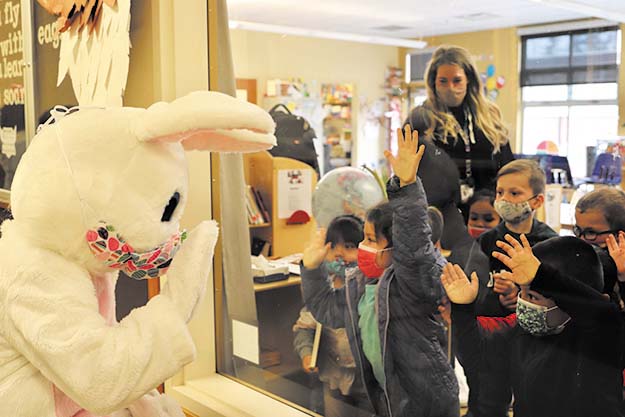
Said Katrina, “Most Easter Bunnies deliver candy, our Early Learning Easter Bunny delivers cultural reading books to promote literacy because we feel it’s important to share the love of a good book!”
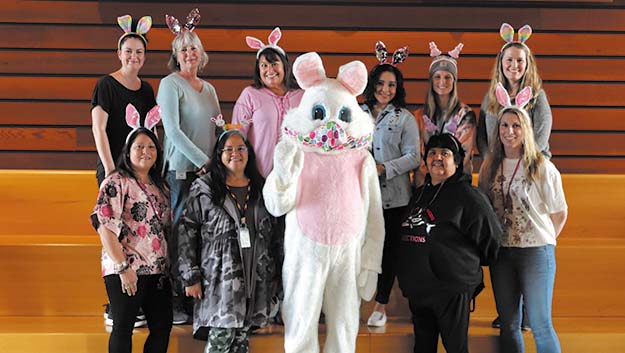
Tribal Council swears-in new leadership after historic voter turnout
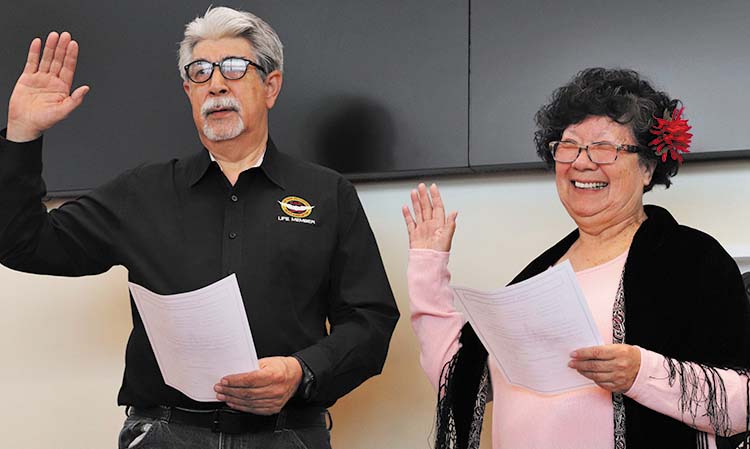
By Micheal Rios, Tulalip News
Back in March 2020, pandemic precautions prevented Tulalip from holding its annual General Council. The Board of Directors election was held though, albeit two months later in May, amongst reservation-wide stay home orders and a lot of self-quarantining. The unique set of circumstances gave many progressive minded citizens plenty to think about in terms of the Tribe’s future direction and immediate needs of the people. As a result, the convenience of being able to cast an absentee ballot from the safety of home led to an unprecedented rate of voter engagement and ballots cast for the 2020 Board of Directors election.
Well, history repeated itself in the best kind of way last month as the 2021 Board of Directors election resulted in another historic voter turnout by Tulalip’s membership. A whopping 1,413 total ballots were counted during the Tribe’s March 20 election day.
Elder Pat Contraro sent shock waves through the reservation when she was declared top vote getter with 447. The stunning result was largely due to the hefty increase she received in just one year’s time; last election she received only 176 votes. It’s a true testament to her straight forward, no nonsense approach that she’s ran on for years now. Her candidate platform never wavered from ‘Transparency, Accountability, and Integrity!’
“I am honored that you have entrusted me to represent you – our membership,” Pat announced via Facebook. “For the past several years many have allowed me into your homes. You have shared your needs, ideas, concerns, and aspirations for our Tribe. Our future holds challenges, but we can overcome them if we rise above the politics and go back to our teachings – which includes caring for our elders, our youth and one another.
“I look forward to working for and with you to restore jobs, increase housing, and make changes so our children may be assured of a positive future,” she added. “I am eternally grateful to my tribal family, friends, and supporters who have remained and/or joined me in my journey during the past five years. I will serve you to the best of my ability and continue to listen and respond to your needs and concerns.”
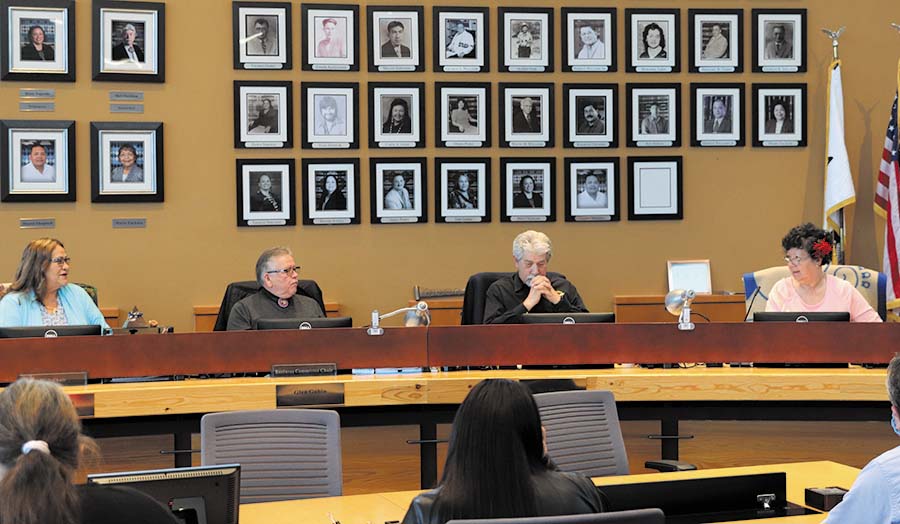
This year’s second open Board seat ended up being a battle of incumbents, with Mel Sheldon, Jr. (385) outpointing Marlin Fryberg, Jr. (375) by only 10 votes. The super slim margin once again proved that when it comes to Tulalip elections, every vote truly does matter.
“To the 1,400+ members who voted in this election, thank you, your voice speaks volumes,” reflected Mel after the election results were made official. “It shows how much our people care about their community. This was my closest election ever, outside of the year I got voted off, so it’s a real learning opportunity for me. I will make it a priority to reach out and listen to those who feel their views aren’t represented at the Board level, and look forward to building the momentum we created last year into even more economic opportunities for our people.
“As a Tribe, we are in a golden era of opportunity,” he continued. “The continued success of our casinos and other business endeavors has created so much opportunity for our people. If they choose to capitalize on it, then they have opportunity for the highest quality of education, career opportunities in construction trades, and job opportunities in a wide range of tribal programs that will help us take our economic development to the next level.”
The latest rendition of Tulalip’s Tribal Council was sworn-in on the morning of Friday, April 2 by Chairwoman Teri Gobin. Extensive well wishes and messages of appreciation were given by one Board member after another to exiting councilmember Marlin Fryberg for his two-decades of service to his people. Then Pat and Mel raised their right hands and took their oaths to preserve, serve, and protect the constitution and bylaws of the Tulalip Tribe.
“As a team, I know we can get some really good work done,” said Chairwoman Gobin as she looked towards her fellow Board members. “We have over 5,000 tribal members now. It’s our entrusted responsibility to look out for their best interest, to create and develop necessary services that keep in mind our future generations, and to work together as a team for the benefit of all of our people. It’s a challenge, but with a shared vision we can accomplish amazing things.”
The adventure of Sparky and the Easter Bunny
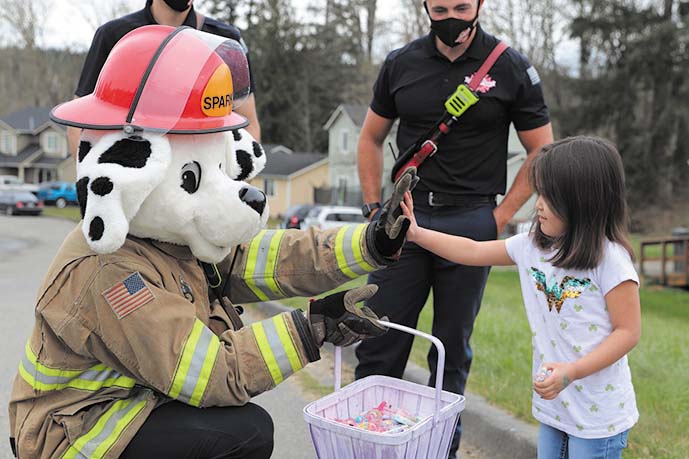
By Kalvin Valdillez, Tulalip News
Giddy with excitement and anticipation, the young children of Tulalip, some sitting in their driveways, others peeking out their blinds every five seconds, were on the lookout for two magical creatures who joined forces over the Easter holiday weekend. Both are animals but walk upright like humans and stand at approximately 6’0” in height. The characters walked through the streets of several Tulalip neighborhoods, delivering candy, bubbles and toys to the youth, who were in total awe and were über-ecstatic to see a giant bunny and a life-sized dalmatian visit them – at their home, on their very-own reservation.

The Easter Bunny and Sparky the Fire Dog responded to the call when local community-led and funded organization, Together We’re Better, needed a little assistance spreading Easter joy to Tulalip families.
“It was important for us to do an event,” expressed Together We’re Better Founder, Malory Simpson. “Normally, we do a huge Easter egg hunt and multiple communities come out to celebrate, but COVID has interfered with a lot of events this year. Seeing the kids cooped up and not having anything really planned for them, we wanted to do something for the kids and bring Easter to the community.”

Pre-pandemic, Together We’re Better was known throughout Tulalip for their monthly potlucks and putting on exhilarating community events such as the Halloween-themed Trunk-or-Treat gathering. Together We’re Better also collaborates and assists other local organizations with their events, such as the Aunties-in-Action for their periodic food distributions.
With gathering-limitations still in place, the organization decided to bring Easter eggs to the children this year as opposed to their annual tradition of hiding them. Drawing inspiration from the Tulalip Bay Fire Department’s yearly Christmas-time Santa Run, Together We’re Better partnered with the local fire station to present a similar festivity to the community.

On the afternoon of April 3, Malory, a group of Together We’re Better volunteers, a number of firefighters, Sparky the Fire Dog, and the Easter Bunny gathered outside of the Tulalip Bay fire station. After the group convened for a quick game plan, the entire collective hopped to it, with baskets of candy in-hand, while escorted by a shiny fire engine and an EMS vehicle.
“Our main mission is to serve the community,” said TBFD Firefighter, John Carlson. “Serving doesn’t always mean emergency responses, it also means helping out and bringing some happiness, and today was a day exactly like that. A lot of people have been cooped up and felt kind of isolated, just kind of not in a normal state. This brought back a little bit of normalcy back to their lives. We certainly haven’t done public events like we used to in the past, so it was really great for us too. It was refreshing to get out of the station and interact with the public. I love the pure joy and smiles. Some of the kids were shaking and dancing they were so excited to see us coming.”
As the group delivered candy and other Easter goodies to the kids, they were in-turn awarded with smiles, laughter and love from the children who were happy to see the Easter bunny this year, as well as Sparky, although most Paw-Patrol fans mistook the friendly dalmatian for the show’s lead-character, Marshall. Kids weren’t the only ones to enjoy the event as many elders posted outside on their porches or driveways, greeting the procession while they made they made-their-way to the various neighborhoods within the TBFD’s district, including Mission Highlands, Silver Village, Battle Creek and the Y-Site.
Malory exclaimed, “I loved it. It felt great to be out there. A lot of these kids, I worked at their school, so it was amazing seeing them. Their smiles and laughter make you feel really good inside. Together We’re Better is community funded. We were blessed with a little bit of a donation from the Tulalip events department. At the last minute they gave us some suckers and bubbles. But for the most part, it’s community-driven and 100% community-funded. Just seeing the excitement was one of the best things about the event today, bringing some joy into the developments and seeing how happy the kids were to see the Easter Bunny and Sparky the Dalmatian.”
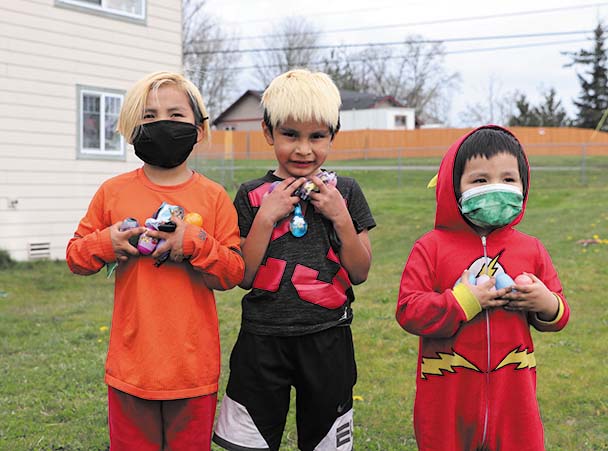
If you are looking to get more involved with the community, Together We’re Better, is always accepting donations, whether that is goods, money or your personal volunteered time. For more information, please contact Malory Simpson at (425) 905-9137.
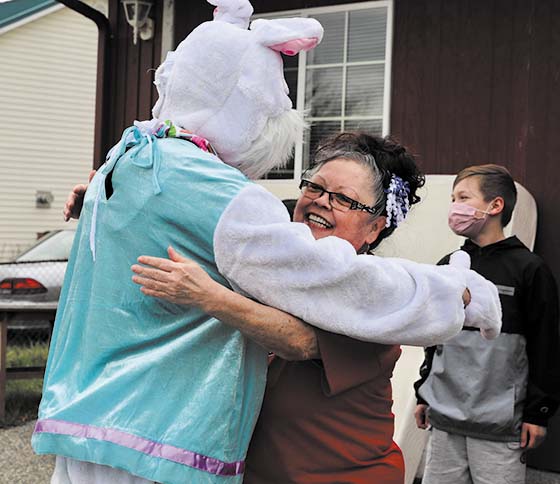
Covid Case Report, April 6, 2021
Covid Case Report, April 3, 2021
April 3, 2021 syəcəb
Trailblazer Deb Haaland represents Native America as Secretary of the Interior
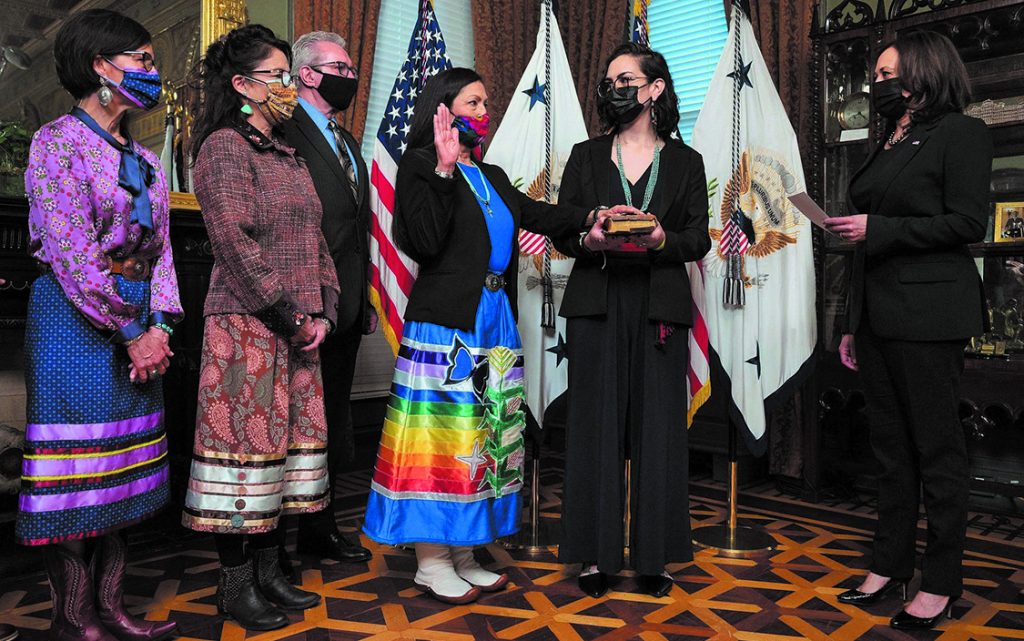
By Micheal Rios, Tulalip News
The last few years have been a whirlwind of history making transformation for Laguna Pueblo tribal member Deb Haaland. In late 2018, she burst onto the national scene by becoming the first ever Native American woman elected to Congress. While representing her home state of New Mexico, Congresswoman Haaland won over the hearts of tribal members everywhere with her unapologetically bold speeches and genuinely Indigenous perspective on U.S. politics.
Even if we didn’t live in New Mexico, she become our de-facto Congresswoman because she represented us, the millions of people from hundreds of tribes that together create Native America.
Following the battle for America’s soul, aka the 2020 presidential election, President Biden announced Representative Haaland’s name as his top candidate for Secretary of the Interior. In doing so, the Biden Administration acknowledged the history of past mistreatment and destructive policies that have hurt tribal communities.
After all, the Department of the Interior is the primary federal agency charged with carrying out the United States’ trust responsibility to Native people, maintaining the government-to-government relationship with the federally recognized Tribes, and promoting and supporting tribal self-determination. Interior provides services to over 2.4 million Native citizens that include education, social services, economic development, law enforcement, housing improvement, disaster relief, road maintenance, and natural resource management.
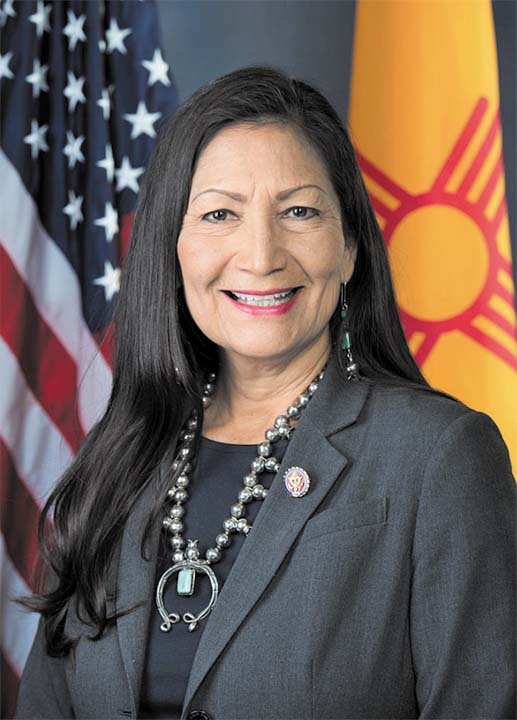
Seems only appropriate that after so many generations worth of termination based policy and mismanagement of tribal appointed funds, that an actual Native American political leader finally be given an opportunity to manage the Interior. Only then can true healing begin and trust start to build between the 574 federally recognized tribes and the U.S. government agency tasked with supporting their overall health and development.
“I’ll be fierce for all of us, for our planet, and all of our protected land,” said Deb Haaland in her nomination acceptance speech. “This moment is profound when we consider the fact that a former secretary of the interior once proclaimed it his goal to, quote, ‘civilize or exterminate’ us. I’m a living testament to the failure of that horrific ideology.”
Representation and diversity matter to the 35th generation New Mexican, whose connection to her Laguna Pueblo people is unquestioned. Her unique life experiences as an Indigenous person shape the 60-year-old’s political decisions to benefit her Native brothers and sisters in a manner previously unimagined. She explained to The Guardian, “We don’t need people who all have the same perspective, we need people from various parts of the country, who’ve been raised in different ways, who bring that history and culture with them, and employ what we’ve learnt from their parents and grandparents, and bring all of that to bear in the decisions that we make.
“Environmental injustice and economic injustice have taken a hold of so many communities, and they’ve had enough. They want us to pay attention and help them to succeed. As far as Indian Country is concerned, I want to make sure tribal leaders – and all marginalized communities – have a seat at the table.”
After a two-day confirmation hearing in early March, basically a high-profiled, public interview by congressional leaders of both political parties, the U.S. Senate met on March 15 to vote on Haaland’s history making appointment. The vote was 51 for and 40 against, more than enough to confirm her as President Biden’s Interior secretary. It was another remarkable vote on the side of Haaland who has broken down yet another barrier and opened the door to new possibilities by becoming the first ever Native American Cabinet secretary.
The build up to her Thursday, March 18 swearing-in ceremony was full of fervor across Indian Country. And to her credit, the tribal trailblazer embraced the momentous occasion in true indigenous style by proudly wearing a traditional ribbon skirt, white leather moccasins, and an assortment of turquoise Native bling for the nation to see.
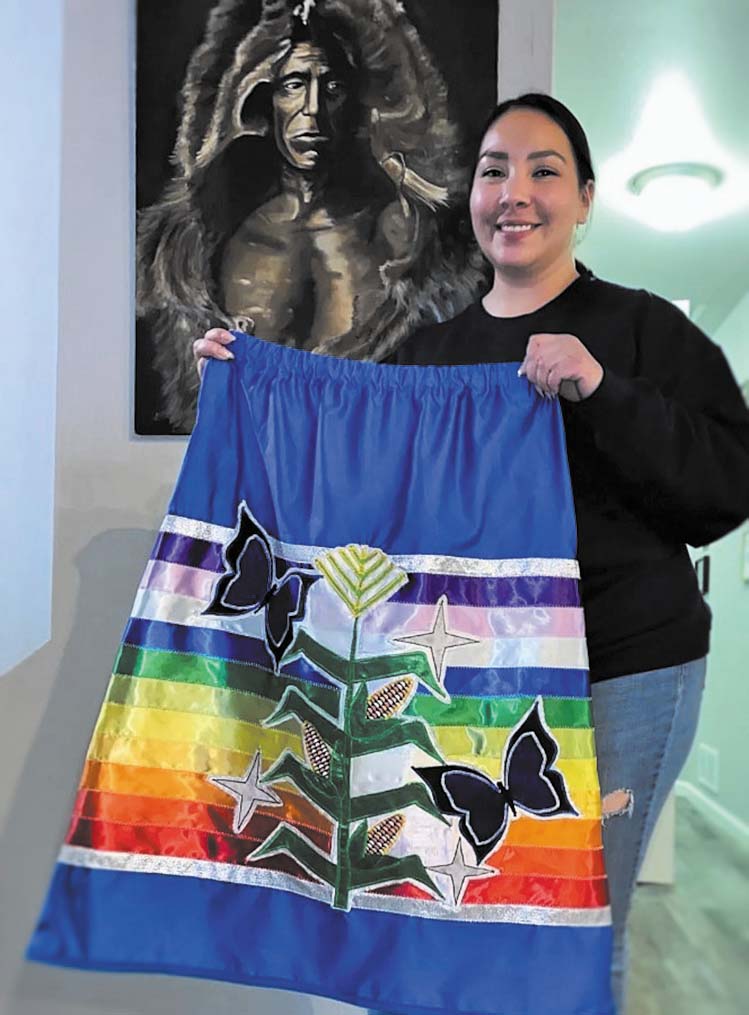
Standing in front of Vice President Kamala Harris with her right hand raised, Deb Haaland was sworn as the 54th Secretary of the Interior. The long rainbow ribbon skirt adorned with a corn stalk, butterflies and stars was impossible to miss. The ribbon skirt is a symbol of resilience, sacredness and survival is not bound to one specific tribe, but heavily influenced by Plains tribes.
The story behind the dress is one of empowerment and survival of a community and also its designer. The garment was made as a “celebration-style skirt” in recognition of Haaland’s historic nomination, explained its creator Agnes Woodward, who is Plains Cree from Kawacatoose First Nation in Canada. The 38-year-old seamstress devoted weeks to creating the distinct piece of clothing from her home in North Dakota. While the rainbow colors are meant to represent all people and the pair of dark blue butterflies serve to offer an uplifting message, the cornstalk is a symbol of Haaland’s enrolled membership of the Pueblo of Laguna.
“Growing up, sometimes it felt like no matter how much we as a people fought for our right to be heard, for our right to be at tables making decisions on our behalf, it felt like we were often not heard,” said Woodward, the Plains Cree dressmaker, to CBC Radio. “So for Deb Haaland to be in one of the highest positions in this country in front of the world, standing in a ribbon skirt that represents our people is definitely a moment that obviously means we’ve been seen and that we are visible. Because she represents all of us.”
From Deb Haaland to Congresswoman Haaland to now Secretary Haaland with Cabinet-level decision making power, her journey has taken her from a New Mexico based reservation to the highest echelons of decision making in Washington D.C. She will lead the Department of Interior in a continued effort to respect tribal self-determination, ensure meaningful consultation with tribes on matters affecting their interests, and work in partnership with tribal governments to support the development of Native communities.
For the first time in history, the Interior will be led with Indigenous values and integrity. Following her swearing-in ceremony, Secretary Haaland said, “Today I stand on my ancestor’s shoulders ready to serve as the first Native American cabinet secretary. I am honored and ready to work. I look forward to tackling some of the nation’s most pressing issues so that future generations can enjoy our public lands and waters for years to come.”
